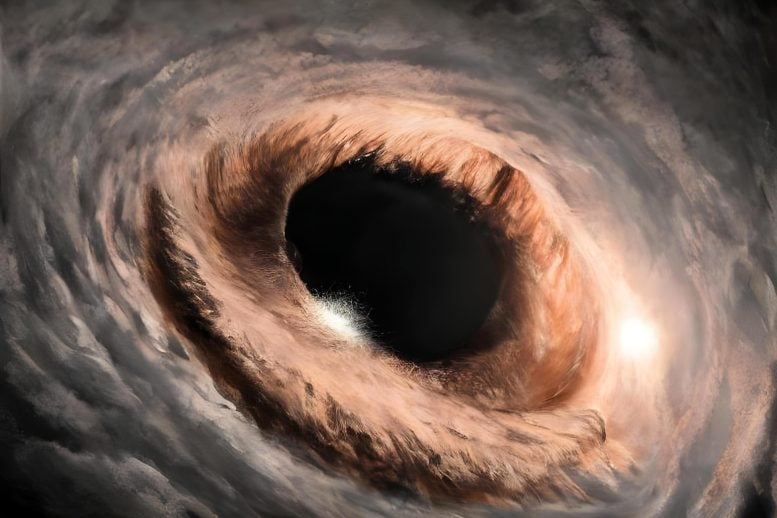
Artist’s impression of a supermassive black hole. Cosmological coupling allows black holes to grow in mass without consuming gas or stars. Credit: UH Manoa
Searching through existing data spanning 9 billion years, a team of researchers led by scientists at the University of Hawaiʻi at Manoa has uncovered the first evidence of “cosmological coupling” – a newly predicted phenomenon in Einstein’s theory of gravity, possible only when black holes are placed inside an evolving universe.
Astrophysicists Duncan Farrah and Kevin Croker led this ambitious study, combining Hawaiʻi’s expertise in galaxy evolution and gravity theory with the observation and analysis experience of researchers across nine countries to provide the first insight into what might exist inside real black holes.
“When LIGO heard the first pair of black holes merge in late 2015, everything changed,” said Croker. “The signal was in excellent agreement with predictions on paper, but extending those predictions to millions, or billions of years? Matching that model of black holes to our expanding universe? It wasn’t at all clear how to do that.”
The team has recently published two papers, one in The Astrophysical Journal and the other in The Astrophysical Journal Letters, that studied supermassive black holes at the hearts of ancient and dormant galaxies.
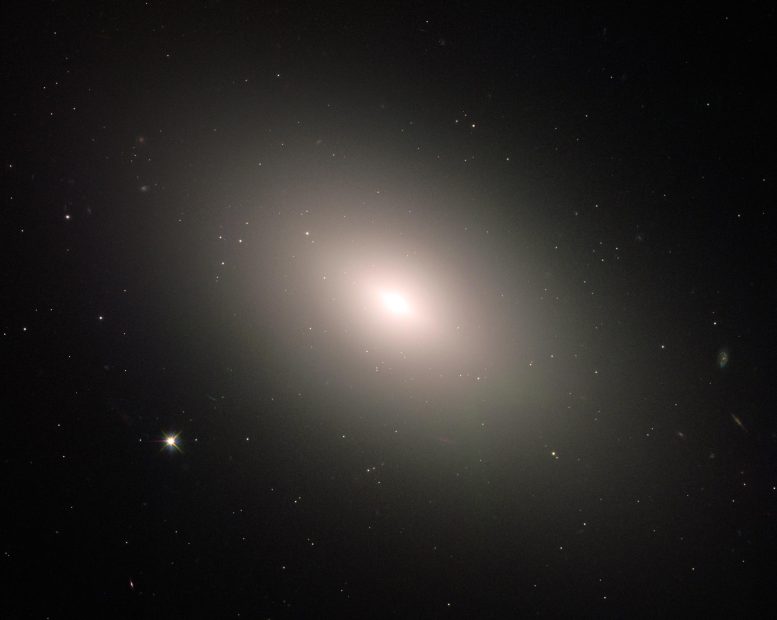
Researchers studied elliptical galaxies like Messier 59 to determine if the mass of their central black holes changed throughout the past 9 billion years. The smooth distribution of light is billions of stars. Credit: ESA/Hubble & NASA, P. Cote
The first paper found that these black holes gain mass over billions of years in a way that can’t easily be explained by standard galaxy and black hole processes, such as mergers or accretion of gas.
The second paper finds that the growth in mass of these black holes matches predictions for black holes that not only cosmologically couple, but also enclose vacuum energy—material that results from squeezing matter as much as possible without breaking Einstein’s equations, thus avoiding a singularity.
With singularities absent, the paper then shows that the combined vacuum energy of black holes produced in the deaths of the universe’s first stars agrees with the measured quantity of dark energy in our universe.
“We’re really saying two things at once: that there’s evidence the typical black hole solutions don’t work for you on a long, long timescale, and we have the first proposed astrophysical source for dark energy,” said Farrah, lead author of both papers.
“What that means, though, is not that other people haven’t proposed sources for dark energy, but this is the first observational paper where we’re not adding anything new to the universe as a source for dark energy: black holes in Einstein’s theory of gravity are the dark energy.”
These new measurements, if supported by further evidence, will redefine our understanding of what a black hole is.
Nine billion years ago
In the first study, the team determined how to use existing measurements of black holes to search for cosmological coupling.
“My interest in this project was really born from a general interest in trying to determine observational evidence that supports a model for black holes that works regardless of how long you look at them,” Farrah said. “That’s a very, very difficult thing to do in general, because black holes are incredibly small, they’re incredibly difficult to observe directly, and they are a long, long way away.”
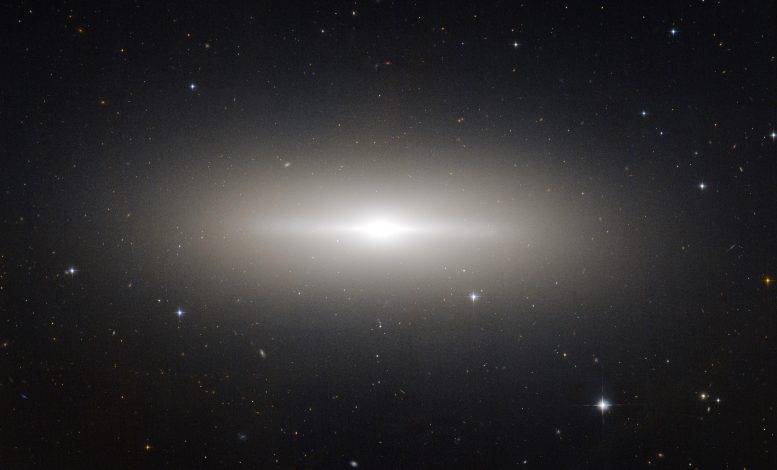
Caldwell 53 (NGC 3115) is most notable for the supermassive black hole that can be found at its center. Credit: NASA, ESA, and J. Erwin (University of Alabama)
Black holes are also hard to observe over long timescales. Observations can be made over a few seconds, or tens of years at most—not enough time to detect how a black hole might change throughout the lifetime of the universe. To see how black holes change over a scale of billions of years is a bigger task.
“You would have to identify a population of black holes and identify their distribution of mass billions of years ago. Then you would have to see the same population, or an ancestrally connected population, at present day and again be able to measure their mass,” said co-author Gregory Tarlé, a physicist at University of Michigan. “That’s a really difficult thing to do.”
Because galaxies can have life spans of billions of years, and most galaxies contain a supermassive black hole, the team realized that galaxies held the key, but choosing the right types of galaxy was essential.
“There were many different behaviors for black holes in galaxies measured in the literature, and there wasn’t really any consensus,” said study co-author Sara Petty, a galaxy expert at NorthWest Research Associates. “We decided that by focusing only on black holes in passively evolving elliptical galaxies, we could help to sort this thing out.”
Elliptical galaxies are enormous and formed early. They are fossils of galaxy assembly. Astronomers believe them to be the final result of galaxy collisions, enormous in size with upwards of trillions of old stars.
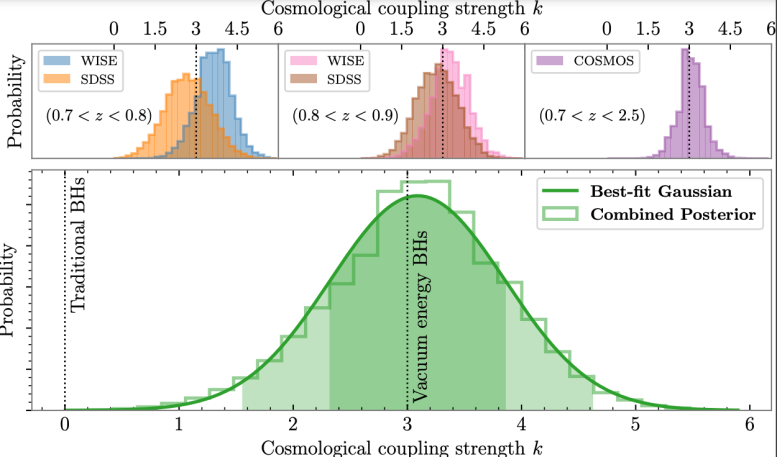
Measurement of coupling strength k by comparing black hole masses in 5 different collections of ancient elliptical galaxies to the black holes in elliptical galaxies today. Measurements cluster around k = 3, implying that black holes contain vacuum energy, instead of a singularity. Credit: Farrah, et al. 2023 [the ApJ Letter]
If mass growth of black holes only occurred through accretion or merger, then the masses of these black holes would not be expected to change much at all. However if black holes gain mass by coupling to the expanding universe, then these passively evolving elliptical galaxies might reveal this phenomenon.
The researchers found that the further back in time they looked, the smaller the black holes were in mass, relative to their masses today. These changes were big: The black holes were anywhere from 7 to 20 times larger today than they were 9 billion years ago—big enough that the researchers suspected cosmological coupling could be the culprit.
Unlocking black holes
In the second study, the team investigated whether the growth in black holes measured in the first study could be explained by cosmological coupling alone.
“Here’s a toy analogy. You can think of a coupled black hole like a rubber band, being stretched along with the universe as it expands,” said Croker. “As it stretches, its energy increases. Einstein’s E = mc2 tells you that mass and energy are proportional, so the black hole mass increases, too.”
How much the mass increases depends on the coupling strength, a variable the researchers call k.
“The stiffer the rubber band, the harder it is to stretch, so the more energy when stretched. In a nutshell, that’s k,” Croker said.
Because mass growth of black holes from cosmological coupling depends on the size of the universe, and the universe was smaller in the past, the black holes in the first study must be less massive by the correct amount in order for the cosmological coupling explanation to work.
The team examined five different black hole populations in three different collections of elliptical galaxies, taken from when the universe was roughly one half and one third of its present size. In each comparison, they measured that k was nearly positive 3.
The first observational link
In 2019, this value was predicted for black holes that contain vacuum energy, instead of a singularity by Croker, then a graduate student, and Joel Weiner, a UH Manoa mathematics professor.
The conclusion is profound: Croker and Weiner had already shown that if k is 3, then all black holes in the universe collectively contribute a nearly constant dark energy density, just like measurements of dark energy suggest.
Black holes come from dead large stars, so if you know how many large stars you are making, you can estimate how many black holes you are making and how much they grow as a result of cosmological coupling. The team used the very latest measurements of the rate of earliest star formation provided by the James Webb Space Telescope and found that the numbers line up.
According to the researchers, their studies provide a framework for theoretical physicists and astronomers to further test—and for the current generation of dark energy experiments such as the Dark Energy Spectroscopic Instrument and the Dark Energy Survey—to shed light on the idea.
“If confirmed this would be a remarkable result, pointing the way towards the next generation of black hole solutions,” said Farrah.
Croker added, “This measurement, explaining why the universe is accelerating now, gives a beautiful glimpse into the real strength of Einstein’s gravity. A chorus of tiny voices spread throughout the universe can work together to steer the entire cosmos. How cool is that?”
References:
“A Preferential Growth Channel for Supermassive Black Holes in Elliptical Galaxies at z ≲ 2” by Duncan Farrah, Sara Petty, Kevin S. Croker, Gregory Tarlé, Michael Zevin, Evanthia Hatziminaoglou, Francesco Shankar, Lingyu Wang, David L Clements, Andreas Efstathiou, Mark Lacy, Kurtis A. Nishimura, Jose Afonso, Chris Pearson and Lura K Pitchford, 15 February 2023, The Astrophysical Journal.
DOI: 10.3847/1538-4357/acac2e
“Observational Evidence for Cosmological Coupling of Black Holes and its Implications for an Astrophysical Source of Dark Energy” by Duncan Farrah, Kevin S. Croker, Michael Zevin, Gregory Tarlé, Valerio Faraoni, Sara Petty, Jose Afonso, Nicolas Fernandez, Kurtis A. Nishimura, Chris Pearson, Lingyu Wang, David L Clements, Andreas Efstathiou, Evanthia Hatziminaoglou, Mark Lacy, Conor McPartland, Lura K Pitchford, Nobuyuki Sakai and Joel Weiner, 15 February 2023, The Astrophysical Journal Letters.
DOI: 10.3847/2041-8213/acb704








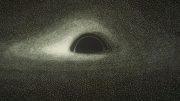
Researchers researching… again!
I wonder when we start getting scientists to science?
They are applying 2-D thinking on a 3-D universe. Let them hit their brick walls. Eventually they will find the answer to their paradox outside the conceptual process.
Science is the seeking of information. Art is the application. What we are witnessing here is scientists “sciencing”. When that information is employed to an end, it will be art, i.e. intergalactic space travel.
You never know where or when you will find anti-science trolls plying their regrettable trade.
I think that it’s a good article written for laypeople to get the gist of black hole life cycle to get people interested in science and math again as we sorely need these days.
Interesting thought but if blackholes become more massive as the universe expands how could this not have an impact on the galaxy in which it resides especially with the stars closest to it in the crowded center? Wouldn’t it cause the blackhole to either “eat” an extraordinary amount of stars surrounding it or fling an unusually high number of stars on a journey out of said galaxy due to gravitational interactions?
Some astronomers call galaxy centers that don’t “eat” nearby stars “quiescent”, something I have a hard time believing.
While everyone is focused on supermassive Black Holes at the centers of galaxies, another possibility exists. According to String Theory, a brane (dimensional membrane) surrounds our universe. What if such branes, rather than Black Holes, are also the centers of galaxies? Superheated gas would also form around branes, and they would explain how the matter in the universe became concentrated as galaxies even as the universe was, and still is, flying apart from the Big Bang at a rate that absolutely won’t allow any matter (quarks, even) to gravitationally attract each other to form anything. It would also explain those low-mass stars at the center of the Milky Way and the Andromeda galaxy, and other curious phenomena seen at those centers. How would we know if the center is a Black Hole or a brane? If material (gas, etc.) is seen swirling into the center, it’s a Black Hole. If material doesn’t swirl in, that would be support for a brane. The physical creation of brane-centered galaxies using the quantum foam and similar to Hawking radiation can be found by searching YouTube for “Creating Universes – A String Theory Way”
So where do evaporating black holes figure in this hypothesis?
This article is full of holes, none of them black and in full view.
Another way to explain Dark Energy is suggested by String Theory. All matter and energy, including photons (light), have vibrating strings as their basis.
String and anti-string pairs are speculated to be created in the quantum foam, a roiling energy field suggested by quantum mechanics, and they immediately annihilate each other. If light passes near these string/anti-string annihilations, perhaps some of that annihilation energy is absorbed by the string in the light. Then the Fraunhofer lines in that light will move a bit towards the blue and away from the red shift. As this continues in an expanding universe we get the same curve displayed by Perlmutter and colleagues at their Nobel Prize lecture, without the need for Dark Energy.
This speculation has the universe behaving in a much more direct way. Specifics on this can be found by searching YouTube for “Dark Energy – a String Theory Way”
Did you just get a zoomed in picture of an animal’s eye and use it as an ‘artists impression of a supermassive black hole’? …
As credit for the image is not given to an individual, it seems fair to suppose it was generated from text by something like the so-called “stable diffusion” program. Looks like a little ditty entitled “hairy black hole.”
If one assumed the De Broglie wavelength of all matter falling into a black hole simply became equal to the Schwarzschild radius, this would imply that all the matter’s mass exists only at that radius leading to a massive stable sphere filled with vacuum energy; vacuum energy being pulled on by a massive gravitational force. Wouldn’t this also answer the question of entropy of a black hole matching it’s surface area? Perhaps internal to the Schwarzschild radius time would be negative?
Just brainstorming
Meant to say “became equal to the Schwarzschild radius” * 2 (the diameter)
Black Holes don’t exist. Never have, never will.
And THAT is a scientifically-proven point of fact.
Nor indeed does “Dark Matter”, which is complete fantasy conjoured up by “researchers” who simply won’t accept the EVIDENCE that has been presented by evidence-gathering SCIENTISTS.
And all the fancy artwork, computer-generated “photos” and researcher claims will do NOTHING to prove otherwise.
Cosmic (Hubble) expansion that increases BH mass is at least intelligible, but I don’t get the dark energy angle. They’re talking as though BHs are the origin of dark energy, where dark energy creates positive pressure in the universe, but how they get from increased BH mass to the ORIGIN of dark energy seems unexplained (and unintelligible to me).
It’s mostly interesting to me how this idea pops up prominently about a day after I made a brief reference to a dark energy effect (as a reversed gravity field carrier effect) emitted from half of a hybrid white/black hole-like object as a possibility for the butterfly nebula.
FWIW, more recent news about the shapes of neutron star collisions makes them look like short circuits demonstrating how magnetic fields are always ready to carry real energy flows.
Artists impression seems doctored.
Blackholes are more imaginary but also an inverse way of looking at creation of stars and galaxies. A blackhole is a space vortex created by gathering dust and gas (matter) attracting and spiralling to produce a system like a star system or galactic system.
Blackhole: vortex created by attracting/ionised matter.
Hurricanes have eyes, and a BH is said to be all wall, so there you go, at least two dimensions well-covered anyway.